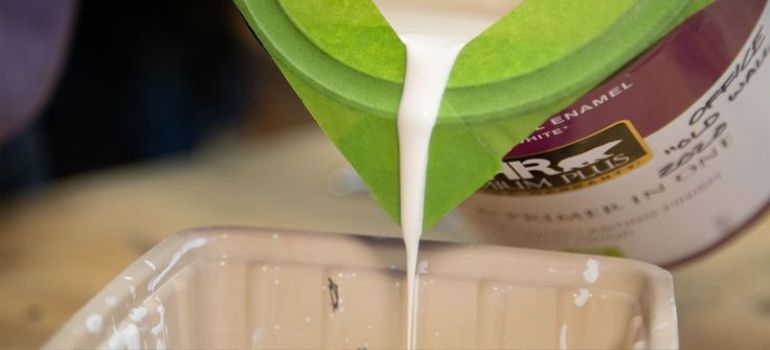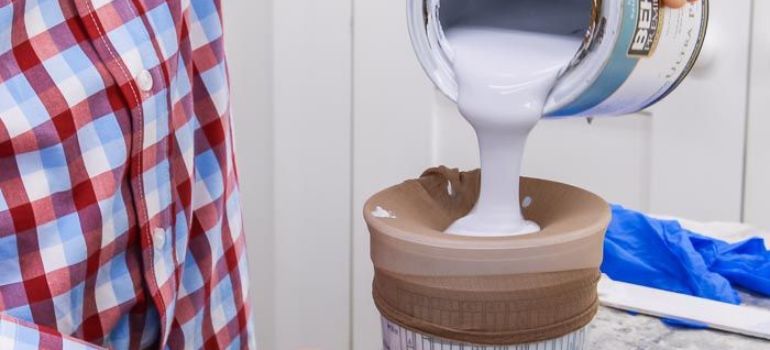Painting projects can be both rewarding and challenging, and ensuring the paint is properly mixed is a crucial step towards achieving a flawless finish. Whether you’re working with latex or oil-based paint, the frequency of stirring can significantly impact the outcome of your project. In this article, we’ll delve into the factors influencing how often you should stir paint and provide practical tips for optimal mixing.
Factors Affecting Paint Stirring Frequency
Type of Paint
Different types of paint have varying compositions, which affect their viscosity and settling properties. Latex paint, for example, tends to separate more quickly than oil-based paint due to its water content. As a result, latex paint typically requires more frequent stirring to maintain consistency.
Storage Duration
The length of time paint has been sitting unused can also influence how often it needs to be stirred. Paint that has been stored for an extended period is more likely to settle, requiring thorough mixing before use. It’s essential to check the manufacturer’s recommendations for specific guidelines on paint storage and stirring frequency.
Temperature
Extreme temperatures can impact the viscosity of paint, causing it to separate or thicken. In colder climates, paint may settle more quickly, necessitating more frequent stirring to ensure uniformity. Conversely, high temperatures can accelerate the drying process, making it essential to mix paint thoroughly to prevent clumping.
How Often Should You Stir Latex Paint?
Latex paint should be stirred before each use, even if it has only been sitting for a short period. The agitation helps redistribute any settled particles and ensures a consistent color and texture throughout the paint. Use a stir stick or paint mixer attachment for a drill to thoroughly mix latex paint before applying it to your surface.
How Often Should You Stir Oil-Based Paint?
Oil-based paint typically requires less frequent stirring than latex paint due to its higher viscosity. However, it’s still essential to stir oil-based paint thoroughly before use, especially if it has been stored for an extended period. Use a clean stir stick to blend the paint until it reaches a uniform consistency.
Tips for Effective Paint Stirring

Tools Needed
- Stir sticks or paint mixing attachments for drills
- Clean containers for pouring and mixing paint
- Protective gear, such as gloves and goggles
Technique
- Insert the stir stick or mixer attachment into the paint container.
- Start stirring at a low speed to prevent splashing.
- Gradually increase the speed until the paint is thoroughly mixed.
- Scrape the sides and bottom of the container to incorporate any settled particles.
- Continue stirring until the paint achieves a smooth, uniform consistency.
The Consequences of Not Stirring Paint Adequately
Failing to stir paint adequately can lead to several issues, including:
- Inconsistent color and texture
- Poor coverage and adhesion
- Clumps or streaks on the painted surface
- Reduced durability and longevity of the finish
To avoid these problems, always take the time to stir paint thoroughly before beginning your project.
Importance of Stirring Paint
Before diving into the specifics of how often paint should be stirred, let’s discuss why this step is so crucial. Properly mixed paint ensures uniformity in color and consistency, resulting in a seamless finish on your walls, furniture, or other surfaces. Without thorough stirring, pigments and additives can settle at the bottom of the can, leading to variations in color and texture when applied. This can result in an uneven appearance and compromise the overall quality of your painting project.
How to Determine if Paint Needs Stirring
It’s essential to assess whether paint requires stirring before each use. Here’s how to tell if your paint needs a good mix:
- Visual Inspection: Examine the surface of the paint. If you notice any separation, clumps, or a thickened layer on top, it’s a clear indication that the paint needs stirring.
- Shake Test: Gently shake the paint container back and forth. If you hear a sloshing sound or feel resistance, it suggests that the paint has settled and requires mixing.
- Stick Test: Insert a clean stir stick into the paint and observe how it behaves. If the stick comes out with streaks of different colors or textures, it indicates that the paint needs thorough stirring.
Tips for Storing Paint
In addition to stirring paint before each use, proper storage is essential for maintaining its quality over time. Here are some tips for storing paint effectively:
- Seal Containers Properly: Ensure that paint cans are tightly sealed to prevent air from entering, which can lead to premature drying and thickening of the paint.
- Store in a Cool, Dry Place: Keep paint containers away from direct sunlight and extreme temperatures, as heat can cause paint to degrade and separate.
- Label and Organize: Clearly label paint cans with the color, brand, and date of purchase to easily identify them later. Organize paints by type and color for efficient retrieval.
- Avoid Freezing: Protect paint from freezing temperatures, as this can alter its chemical composition and affect its performance.
- Regularly Check for Signs of Spoilage: Periodically inspect stored paint for any signs of spoilage, such as foul odors, mold growth, or unusual consistency. Discard any paint that appears to have gone bad.
By following these storage guidelines, you can prolong the shelf life of your paint and ensure that it remains in optimal condition for future use.
Environmental Impact of Paint Stirring
While the act of stirring paint may seem like a small step in a larger project, it’s worth considering its environmental impact. By ensuring that paint is thoroughly mixed before use, you can minimize waste and reduce the need for additional coats, thereby conserving resources and reducing your carbon footprint. Additionally, proper paint mixing helps to avoid costly mistakes and rework, further contributing to sustainability efforts in the painting industry.
FAQs about Paint Stirring
Yes, a clean stir stick can be used for both types of paint, but it’s essential to avoid cross-contamination between different paint products.
The duration of stirring depends on the size of the paint container and the extent of settling. In general, aim to stir for at least two to three minutes to ensure thorough mixing.
A paint shaker can be a convenient alternative for thoroughly mixing paint, especially for larger containers or professional settings.
If the paint remains lumpy or uneven despite stirring, it may be old or contaminated. In such cases, it’s best to discard the paint and use a fresh batch for optimal results.
Even if you’re using paint directly from the can, it’s still advisable to give it a quick stir to ensure uniformity, especially if it has been sitting unused for some time.
Conclusion
Properly stirring paint is a critical step in any painting project, ensuring consistent color, texture, and performance. By understanding the factors influencing paint stirring frequency and following best practices for mixing, you can achieve professional-quality results with every coat.



